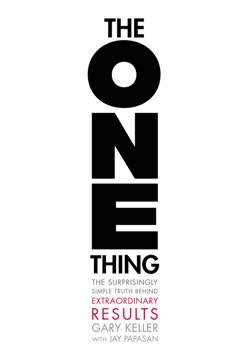Key Takeaways
1. Purpose is an Existential Reason for Being, Not Just a Tool
This statement encompasses both goals and duties, and it succinctly communicates what a business is all about and who it’s intended to benefit.
Beyond Instrumentalism. Most leaders view purpose as a means to an end, a tool to enhance branding, culture, or employee engagement. Deep purpose leaders, however, see it as an existential statement, the very reason for the firm's existence. This fundamental shift transforms how the organization operates, shaping decision-making and uniting stakeholders.
Defining Deep Purpose. A compelling purpose statement has two key features: an ambitious, long-term goal and a commitment to broader social duties. It transcends the pursuit of profit, calling on the organization to serve society or humanity in some way. This deeper sense of purpose acts as a unifying statement of the commercial and social problems a business intends to profitably solve for its stakeholders.
Convenient vs. Deep Purpose. Many firms practice "convenient purpose," articulating idealistic statements but failing to fully integrate them into their core operations. This can take various forms, from "purpose-as-disguise" (using lofty language to mask nefarious activities) to "purpose-on-the-periphery" (treating social initiatives as secondary to the core business) to "purpose-as-win-win-only" (focusing exclusively on solutions that maximize both profit and social good). Deep purpose, in contrast, permeates every aspect of the enterprise.
2. Deep Purpose Requires Navigating Tradeoffs, Not Just Seeking Win-Wins
Inspired and empowered by the purpose, they negotiate stakeholder interests to arrive at sometimes painful decisions that stakeholders may or may not find “good enough” in the short term but that pay off for everyone eventually.
The Illusion of Painless Solutions. Many believe that purpose-driven companies can achieve win-win solutions that benefit both society and investors without any compromise. However, idealized win-win solutions are difficult to achieve, and companies often revert to prioritizing profits when faced with tough choices. Deep purpose leaders acknowledge the inherent challenges and dedicate themselves to navigating tradeoffs between stakeholders.
Practical Idealism. Deep purpose leaders adopt a mindset of "practical idealism," balancing their commitment to purpose with the realities of the commercial system. They aim for solutions that deliver both financial results and social benefits, but they are also willing to make difficult decisions that may require short-term sacrifices from some stakeholders. This approach involves honest and often messy problem-solving, rather than seeking perfect, unattainable outcomes.
Etsy's Example. Josh Silverman, CEO of Etsy, faced criticism for laying off employees and restructuring the company. However, he argued that these measures were necessary to ensure Etsy's long-term viability and its ability to serve all stakeholders, including sellers and the community. By making these tough choices, Etsy was able to improve its financial performance and increase its social impact.
3. Purpose Drives Superior Performance Through Four Key Levers
Profits are in no way inconsistent with purpose—in fact, profits and purpose are inextricably linked.
Beyond Financial Performance. While many companies focus solely on financial metrics, deep purpose leaders understand that purpose can drive superior performance through four key levers: directional, relational, reputational, and motivational. These levers work synergistically to galvanize organizations and generate outsized results.
The Four Levers:
- Directional: Purpose serves as a "North Star," guiding strategy and channeling innovation.
- Relational: Purpose fosters trust and long-term relationships with ecosystem partners.
- Reputational: Purpose builds affinity, loyalty, and trust with customers.
- Motivational: Purpose elevates work, inspiring and motivating employees.
Bühler's Success. The Swiss plant equipment manufacturer Bühler Holding AG exemplifies how these levers can drive success. By committing to "innovations for a better world," Bühler has focused its strategy, built strong relationships with customers, enhanced its reputation, and inspired its employees, leading to sustained high performance and growth.
4. Authentic Purpose is Rooted in the Past, Not Just the Future
In defining purpose, deep purpose leaders look to the past, immersing themselves in the intentions of founders and early employees, scouring for themes that capture the firm’s ineffable soul or essence.
The Sankofa Approach. Like the mythological Sankofa bird, deep purpose leaders look backward to inform their path forward. They immerse themselves in the intentions of founders and early employees, seeking to understand the firm's "soul" or essence. This historical grounding lends authenticity and weightiness to the purpose, fostering deeper emotional connections and commitment.
Connecting with the Past. By understanding the company's origins, values, and key moments in its history, leaders can craft a purpose statement that resonates with employees and stakeholders. This connection to the past provides a sense of continuity and helps to build a strong organizational identity. It also helps to create a moral community.
LEGO's Transformation. Jørgen Vig Knudstorp, CEO of LEGO, revitalized the company by reconnecting it with its founding purpose of providing "good play." By immersing himself in LEGO's history and rediscovering the company's core values, Knudstorp was able to galvanize employees and chart a path toward future success.
5. Communicate Purpose Through Compelling Storytelling, Not Just Slogans
In conveying this story, they discuss purpose in personal terms, establish a sense of shared ownership, and evoke urgency to embrace purpose in the present.
Beyond Generic Messaging. While many companies communicate their purpose through slogans and rallying cries, deep purpose leaders go further by crafting a grand, foundational story about the company. This "Big Story" lends depth, meaning, and even poetry to the enterprise, creating a shared understanding of the organization's values, trajectory, and destiny.
Elements of a Compelling Story:
- Critique the status quo
- Evoke a morally resonant future
- Issue a rallying cry
The "Self-Us-Now" Framework. Deep purpose leaders use storytelling to connect with stakeholders on an emotional level. They tell stories of "Self" (their personal journey and values), "Us" (the organization's identity and shared values), and "Now" (the current challenges and opportunities). This framework helps to create a sense of shared purpose and inspire action.
6. Deep Purpose Cultures Embrace Individuality, Not Just Conformity
Deep purpose leaders bind organizational purpose to team members’ personal development and growth, firing up intrinsic motivation and unleashing new levels of commitment and performance.
Beyond Traditional Culture. While many companies focus on creating strong, conformist cultures, deep purpose leaders embrace individuality. They create humane and inclusive cultures that emphasize self-expression, growth, and personal purpose. This approach recognizes that employees are more engaged and motivated when they can bring their whole selves to work.
Connecting Personal and Organizational Purpose. Deep purpose leaders provide opportunities for employees to connect their personal reasons for being with the organization's purpose. This can involve encouraging employees to explore their values, pursue their passions, and use their unique skills to contribute to the company's mission.
Pete Carroll's Approach. Seattle Seahawks coach Pete Carroll exemplifies this approach by fostering a culture that celebrates individuality and supports players' personal development. By creating a welcoming and inclusive environment, Carroll has been able to unlock his players' potential and achieve remarkable success.
7. Escaping the "Iron Cage" Requires Autonomy and Collaboration
These organizational moves fuel trust in the workforce and commitment to the purpose.
The Limitations of Bureaucracy. While bureaucracies can be efficient, they can also be rigid, impersonal, and soul-destroying. In today's dynamic environment, companies need to be more agile and innovative. Deep purpose leaders recognize that breaking free from the "iron cage" requires granting more autonomy and fostering collaboration.
Autonomy and Collaboration. Deep purpose leaders empower employees by giving them more control over their work and encouraging them to take initiative. They also break down silos and foster collaboration across functions, business units, and geographies. This approach creates a more dynamic and responsive organization.
The Purpose-Trust-Autonomy-Collaboration Nexus. Purpose, autonomy, and trust are interconnected. A strong purpose fosters trust, which in turn enables greater autonomy and collaboration. This creates a virtuous cycle that drives innovation and performance.
8. Sustaining Deep Purpose Requires Vigilance and Proactive Measures
To sustain purpose, deep purpose leaders proactively address some key purpose-derailers.
The Fragility of Purpose. As powerful as purpose is, it remains fragile. Leadership transitions, crises, and growth can all threaten to diminish commitment to purpose and erode the moral community. Deep purpose leaders must be vigilant and proactive in addressing these challenges.
Key Purpose-Derailers:
- The Personification Paradox: The risk of purpose being too closely tied to a specific leader.
- Death by (Inadequate) Measurement: The failure to develop meaningful metrics for tracking progress toward the purpose.
- The Do-Gooder's Dilemma: The challenge of balancing social impact with financial performance.
- The Purpose-Strategy Split: The risk of strategy and purpose becoming misaligned.
Proactive Measures. To sustain purpose, deep purpose leaders must attend to succession planning, foster accountability through metrics, manage shareholder expectations, and moor strategy firmly to purpose. By taking these steps, they can ensure that their organizations remain on track and aligned with their animating reason for being.
Last updated:
FAQ
What's Deep Purpose about?
- Exploring Corporate Purpose: Deep Purpose by Ranjay Gulati examines the role of purpose in high-performance companies, arguing that a well-defined purpose can drive both social good and financial success.
- Framework for Leaders: The book provides a framework for leaders to embed purpose into their organizations, emphasizing that purpose should be an existential statement rather than just a tool for profit.
- Case Studies and Insights: Gulati uses case studies from companies like LEGO and Bühler to illustrate how integrating purpose can enhance performance and stakeholder engagement.
Why should I read Deep Purpose?
- Relevance in Modern Business: The book addresses the growing demand for businesses to operate ethically and sustainably, making it essential for current and aspiring leaders.
- Practical Guidance: It offers actionable insights and frameworks that leaders can apply to foster a purpose-driven culture within their organizations.
- Long-term Value Creation: Understanding how aligning purpose with business strategy can lead to sustainable growth and improved stakeholder relationships is a key benefit of reading this book.
What are the key takeaways of Deep Purpose?
- Purpose as a North Star: A clear purpose serves as a guiding principle for decision-making and strategy formulation within organizations.
- Four Levers for Performance: Gulati identifies four key benefits of purpose: directional, relational, reputational, and motivational.
- Navigating Trade-offs: Leaders must embrace a mindset of "practical idealism" to balance stakeholder interests and commercial goals.
What are the best quotes from Deep Purpose and what do they mean?
- “Without a sense of purpose, no company, either public or private can achieve its full potential.”: This highlights the critical role of purpose in driving organizational success and aligning stakeholders.
- “Purpose is not the sole pursuit of profits but the animating force for achieving them.”: Gulati emphasizes that purpose should be a catalyst for long-term financial success.
- “Deep purpose is an ongoing process to which leaders must commit with all of their heart and soul.”: Embedding purpose requires continuous effort and dedication from leadership.
How does Ranjay Gulati define "deep purpose" in Deep Purpose?
- Existential Statement: Deep purpose is an existential statement that articulates a company's reason for being, beyond mere profit motives.
- Organizing Principle: It serves as an organizing principle that shapes decision-making and binds stakeholders together, fostering a sense of community.
- Long-term Commitment: Leaders must integrate deep purpose into the company’s culture and operations, ensuring it remains relevant and impactful.
How does Deep Purpose suggest leaders can embed purpose in their organizations?
- Articulate a Clear Purpose: Leaders should define a compelling purpose that resonates with both employees and external stakeholders.
- Foster a Culture of Individuality: Encouraging individual expression and aligning personal purposes with the organizational purpose enhances engagement.
- Continuous Communication: Consistent communication through storytelling and actions reinforces the purpose's importance in daily operations.
What are the four levers for superior performance mentioned in Deep Purpose?
- Directional: Purpose acts as a "North Star," guiding strategic decisions and innovation efforts.
- Relational: It helps build trust and long-term relationships with stakeholders, enhancing collaboration.
- Reputational: A strong purpose can improve brand loyalty and customer affinity.
- Motivational: Purpose elevates employee engagement and satisfaction, inspiring individuals to contribute their best efforts.
What is the Personification Paradox in Deep Purpose?
- Leadership Dependency: The Personification Paradox occurs when a company's purpose is heavily tied to its leader, risking loss of direction when that leader departs.
- Succession Planning Importance: Gulati emphasizes the need for careful succession planning to ensure continuity of purpose.
- Cultural Embedding: Organizations should embed purpose into their culture so it is a shared commitment among all employees.
What are the Four Purpose Derailers mentioned in Deep Purpose?
- Personification Paradox: When purpose is too closely tied to a leader, risking loss of direction upon their departure.
- Death by Measurement: Inadequate measurement of purpose can lead to a lack of accountability and focus.
- Do-Gooder’s Dilemma: The tension between pursuing social good and achieving financial performance.
- Purpose-Strategy Split: Misalignment between purpose and strategy can lead to decisions that do not reflect core values.
How can leaders navigate stakeholder tradeoffs according to Deep Purpose?
- Understanding Stakeholder Needs: Recognizing diverse stakeholder needs is crucial for informed decision-making.
- Balancing Interests: Leaders should strive to balance interests, ensuring no single group is disproportionately favored.
- Transparent Communication: Effective communication about decision rationales helps maintain trust and understanding.
What role does storytelling play in communicating purpose according to Deep Purpose?
- Crafting a Big Story: Leaders are encouraged to create a compelling narrative that articulates the company’s purpose.
- Emotional Connection: Storytelling helps forge emotional connections, making the purpose more relatable and impactful.
- Reinforcing Values: Through storytelling, leaders can reinforce the company’s values and mission, ensuring alignment with goals.
How does Deep Purpose suggest organizations can sustain their purpose over time?
- Ongoing Commitment: Sustaining purpose requires continuous effort and commitment from leadership and employees.
- Metrics and Accountability: Implementing metrics to measure adherence to purpose ensures it remains a priority.
- Cultural Integration: Purpose should be woven into the organization's culture, influencing behaviors and practices.
Review Summary
Deep Purpose receives mostly positive reviews, with readers praising its insights on purpose-driven leadership and business success. Many appreciate Gulati's evidence-based approach, real-world examples, and practical frameworks for implementing purposeful strategies. Reviewers highlight the book's emphasis on authenticity and long-term value creation. Some critics find it repetitive or overly long, while others question certain case studies. Overall, readers value the book's exploration of how companies can balance profit with social responsibility and create meaningful impact.
Similar Books










Download PDF
Download EPUB
.epub digital book format is ideal for reading ebooks on phones, tablets, and e-readers.




